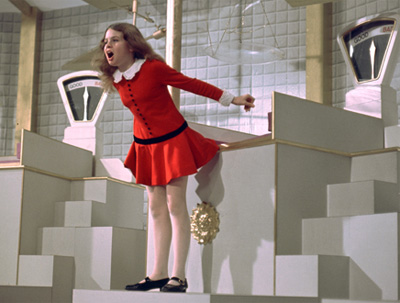Part I: Finding the Best Possible Deals on Expensive but Essential Products
This is the first installment of what will be a multi-part series on caring for the hair and skin of Black and mixed-race children naturally and without breaking the bank. My boys are both Black and of mixed racial background. One has significant Native American ancestry as well, and the other is half Latino. They both have super thick, fine, soft, curly hair. Thank heavens for the
curly hair typing system which has enabled us to assess which type of curls they have and find appropriate products.
Having boys, our hair issues are different than for girls. However, our boys both wear their hair "long" - As in, not in a fade or other super-short cut. The little one has ringlets. Our big guy has a mop of curls. It ranges from a little curly 'fro (friends have commented that it's more like what we Jews call the "Jew 'fro" than like what most Black folks call a 'fro) to a much longer 'do. He occasionally gets it braided when it gets long, but it doesn't hold braids for long.
I am very allergic to synthetic fragrances so our choice of Black hair products is limited. In addition, we prefer natural products for the health of our children and the environment. Here are some of the products we've been using:
We generally use the
Kinky-Curly line of products, including the Come Clean Clarifying Shampoo about once every week or two, the Knot Today Leave-In Conditioner & Detangler as the boys' primary styling product, and the Curling Custard when we want their curls to be extra defined and glossy and we have a little extra time. The cheapest source for Kinky-Curly products is Target, though only select Target stores carry them. We were thrilled to find the Knot Today Leave-In for $11.99 at a local Target, whereas it's $14 plus shipping from
Amazon.com
.
We have also occasionally used the deep conditioning and styling products from Alaffia's
Beautiful Curls line, which we buy at Whole Foods. I like these products because they help support African women farmers, they're Fair Trade and they're sustainable. They are also more legitimately "natural" than Kinky-Curly and slightly cheaper. However, they don't perform quite as well as styling products so we usually just stick to using them for deep conditioning.
One last product we love is
Curly Q's Coconut Dream Moisturizing Conditioner
. It's super conditioning and smells great. It's designed for multiracial kids' hair, but I've heard of white folks with really curly, dry hair using it as well as non-multiracial Black folks. If we were stuck on a desert island with only two hair products, we'd make it the
Curly Q's Coconut Dream Moisturizing Conditioner
and Kinky-Curly's
Knot Today.
Don't forget that there is no one entity that is "African American hair" or "biracial hair" - Black folks' hair comes in a million different and beautiful varieties, with different curl patterns, different thickness, different "shrinkage" levels, different levels of dryness. The hair of people from the African diaspora is not all the same and therefore does not all benefit from the same products. The hair grease used in many Black childrens' hairdos leaves my kids' hair looking slick, weighed down, and dirty. Similarly, the products I list above are perfect for our kids, but may not be perfect for yours.
The frustrating thing is that the products we use, even when bought at Target, are
so darn pricey. We have decided it is worth it because our boys' hair looking good and being healthy is important to us, so we simply search out the best deals on them.
However, there are a few ways in which we manage to use less of these products and save more money, including alternating them with products that are even less expensive and more natural than these. We will have more posts from myself and guest posters about these super-natural and budget-friendly ideas in Part II and Part III of this series. Stay tuned!



























